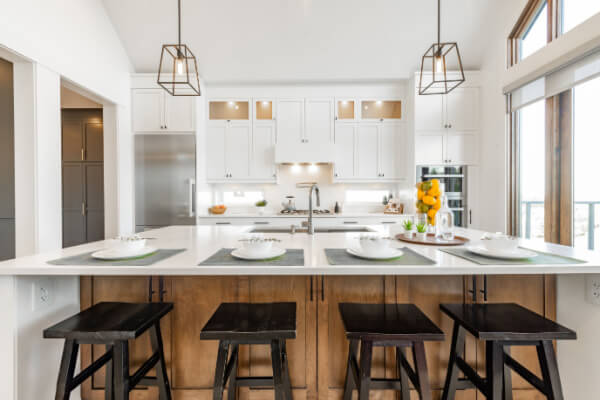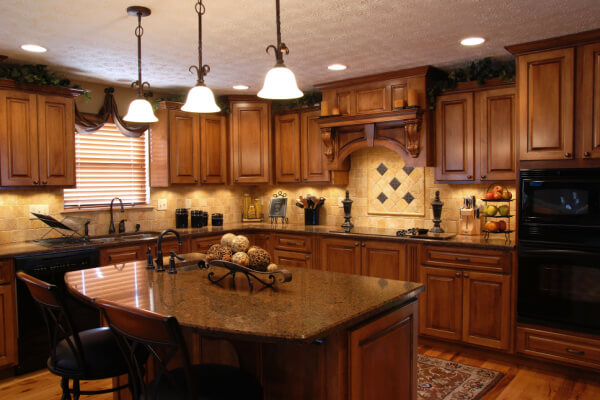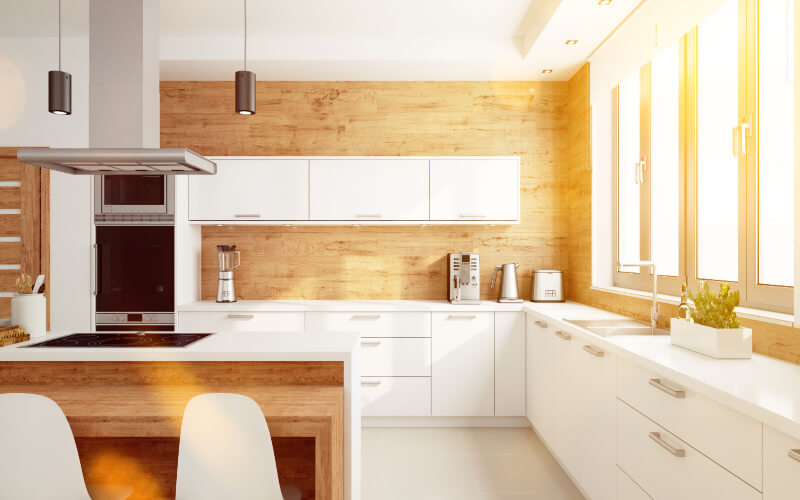Your home’s lighting can impact the overall vibe and atmosphere of the space. While it’s easy to use lighting solely as a functional piece, lighting should also be thought of as decor. With that being said, the kitchen is one of the most used rooms in your home – whether it be for entertainment, cooking, or eating – it’s a great place to focus on your lighting. Read on to learn more about the Do’s and Don’ts to get a brighter kitchen.
Do’s

LED Lighting
When selecting lighting for your kitchen, LED light fixtures are an excellent choice. LED lighting may be more expensive upfront, however, the pros outweigh the cons. LED lights are energy efficient, produce less heat, have a longer lifespan, and are environmentally friendly.
Layer Lighting
Layered lighting is important to help illuminate the entire space. Kitchens are a space that requires specific lighting, such as task lighting while cooking, or overall lighting while entertaining or eating. Think about combining kitchen island lighting, cabinet lights, and ceiling lights to work together. Layered lighting allows you to customize your lighting for the needed functionality. Layered lighting also helps to brighten the space by minimizing shadows.
Add a Mirror
Without having to install new lighting, or swap out bulbs, adding a mirror to your kitchen can help brighten it. Mirrors provide the illusion of more space and light.
Add Colour
Whether your kitchen has a light or dark undertone, adding a pop of colour to the space can help it appear brighter. If you have darker floors and cabinets, install a lighter-coloured backsplash. If you want to get rid of your dark cabinets, rather than replacing them, you can paint them a lighter colour to brighten the space. Learn more about if you should replace or reface your kitchen cabinets here. And lastly, without tapping into any renos, you can simply add an accent colour throughout the space.
Don’ts

Use One Light Source
As mentioned, your kitchen is a multi-use space, so you want to make sure you have lighting for all functions. One way to not do this is by using only one light source, such as kitchen island lighting. While this is great over your island, it can leave other areas dim. One light source is not enough for the space. You can think about adding pendant lighting as another option.
Over Light
While using one light source is a ‘don’t’, you also want to avoid over-lighting the space. Too much light can defeat the purpose of using light and negatively impact the space overall. This is why it’s great to have layered lighting or as an alternative you could install a dimmer switch, allowing you to select the amount of light illuminated.
Mix Lighting
When you begin to layer your lighting or add multiple sources of light, try your best to match the colour of each light. If you start to mix colours and types of lighting, it can be unpleasant to look at and be in. If you have to replace a bulb, make sure you match your existing ones. If you’re unable to find a match, get connected with a pro for help, or replace all your lights!
Use Dark Floors And Dark Cabinets Together
Lighting does have a huge impact on the brightness of your kitchen, however, the fixtures can play an important role as well. Dark-coloured flooring and cabinets will lend a darker kitchen appearance. If you don’t want to change your floor or cabinets, opt for lighter decor. However, painting your cabinets and swapping out your flooring for a lighter colour will make your kitchen brighter.
Take into consideration these do’s and don’ts when trying to brighten your kitchen. Remember to think of lighting as decor, and always remember that there are Pros here to help! Head to HomeStars.com to get connected with a local Pro today.
